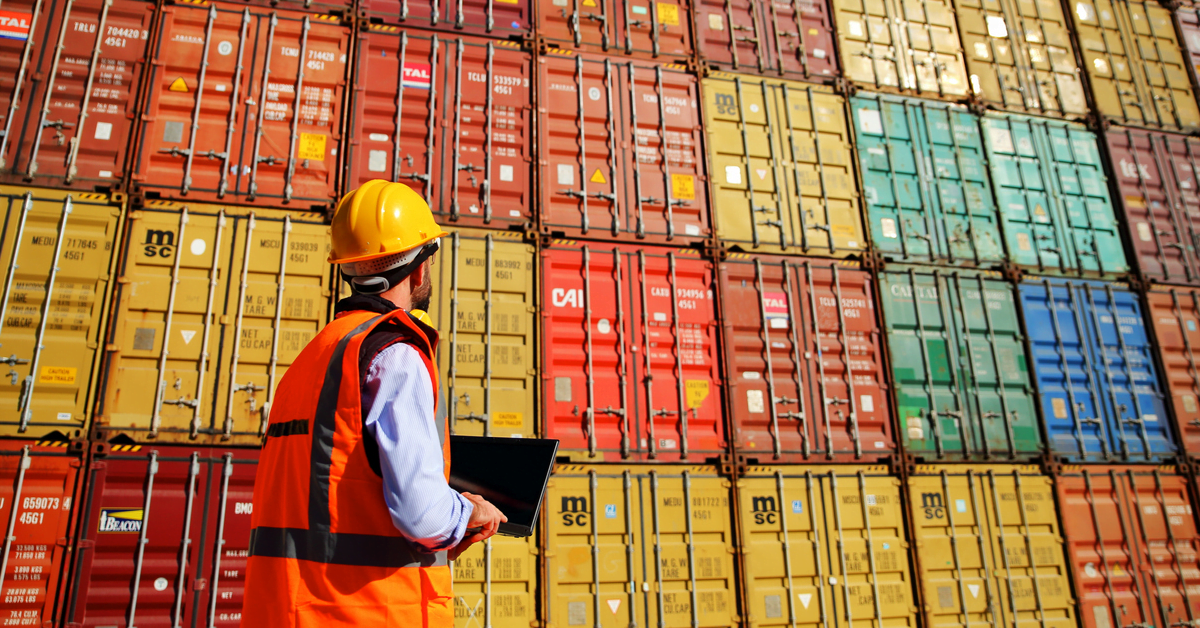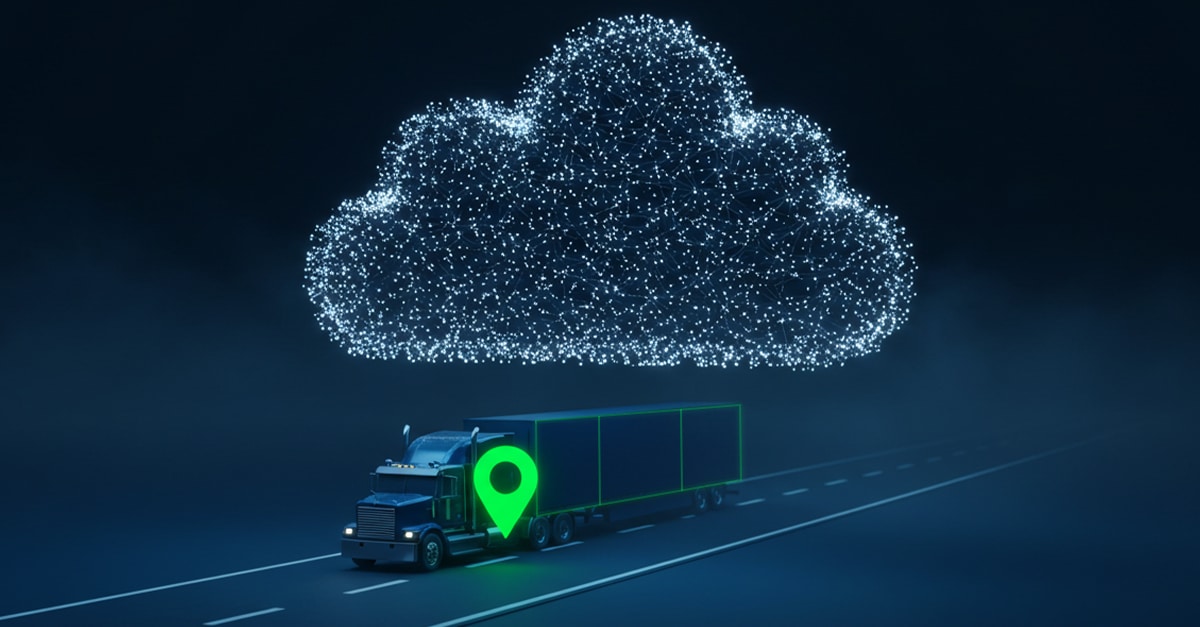In today’s ever-evolving logistics landscape, having an efficient and robust Transportation Management System (TMS) is critical to the success of shipping companies. A TMS can streamline operations, reduce costs, and enhance visibility, providing a competitive edge in an increasingly demanding market. However, selecting the right TMS for your organization can be daunting, with numerous options and features to consider.
To make the decision-making process more manageable and help you find the ideal TMS solution for your company, we’ve compiled a list of the top 5 questions you should ask when evaluating potential TMS providers. These questions will guide you in identifying the most critical aspects of a TMS, ensuring seamless integration with your existing systems, and meeting your current and future transportation needs. Read on to discover the key factors you should consider to unlock the full potential of a TMS and set your company on the path to logistics excellence.
What are the real-time visibility and reporting capabilities of the TMS?
This is perhaps one of the most important questions to ask. Real-time visibility and reporting capabilities of a Transportation Management System (TMS) are important for several reasons.
Real-time visibility into shipments enables shippers to make more informed decisions, such as adjusting routes or carriers to address unforeseen disruptions, like weather or traffic issues. Timely access to data allows shippers to be proactive in managing their transportation processes. Shippers can improve customer communication by providing accurate, real-time information on shipment status and ETAs, leading to higher satisfaction levels. Customers appreciate transparency and the ability to plan based on up-to-date information.
Real-time visibility allows shippers to identify and address potential issues before they escalate. For example, if a shipment is delayed or damaged, shippers can take immediate action to resolve the problem and minimize the impact on the customer. This data can also be used for reporting.
Reporting capabilities in a TMS enable shippers to track Key Performance Indicators (KPIs) such as on-time delivery rates, carrier performance, and transportation costs. Analyzing this data helps identify trends and areas for improvement, enabling shippers to optimize their operations and reduce costs. Real-time visibility and reporting foster better communication and collaboration with carriers and supply chain partners. By sharing up-to-date information, all parties can work together more efficiently to address challenges and maintain smooth transportation processes – even manage risk.
Real-time visibility helps shippers identify potential risks, such as capacity constraints, carrier performance issues, or regulatory compliance concerns. Early identification of these risks allows shippers to take corrective action and minimize disruptions to their supply chain. Inventory management: Real-time visibility into shipment status enables shippers to better manage inventory levels, reducing the need for safety stock and minimizing carrying costs. With accurate ETAs, shippers can optimize warehouse operations and labor planning, leading to improved efficiency.
P.S. Read how an efficient TMS system with clear, concise communication between all parties and end to end visibility streamlines the shipping process.
How does the TMS optimize routing, carrier selection, and cost management?
A Transportation Management System (TMS) optimizes routing, carrier selection, and cost management through several features and capabilities:
Route Optimization Algorithms
Advanced algorithms can be used to determine the most efficient routes for shipments based on factors such as distance, transit time, and traffic conditions. These algorithms can also consider specific requirements, like multi-stop and multi-modal transportation, to find the best routing options that minimize transit time and fuel consumption.
Carrier Selection and Management
Automation of the process of selecting the most suitable carriers based on various criteria, such as cost, performance, capacity, and transit time. The system can also maintain a database of carrier contracts and rates, making comparing and negotiating freight rates easier. This helps shippers choose carriers that offer the best value while meeting their service requirements.
Consolidation and Load Planning
TMS software can consolidate shipments with similar destinations and timeframes, allowing shippers to take advantage of full truckload (FTL) or less-than-truckload (LTL) options. Shippers can reduce transportation costs and improve asset utilization by consolidating shipments and optimizing load planning.
Mode and Service Level Optimization
Evaluate different transportation modes (e.g., truck, rail, air, ocean) and service levels (e.g., expedited, standard) to find the most cost-effective solutions that meet the required delivery timelines. Shippers can make informed decisions that balance cost and service expectations by comparing various options.
Automated Freight Audit and Payment
Streamline and automate the freight audit and payment process, reducing manual errors and ensuring accurate billing. This helps shippers avoid overpayments and identify opportunities for additional cost savings through more favorable carrier contracts or service adjustments.
Compliance and Risk Management
A TMS can help carriers maintain compliance with various regulations, reducing the risk of costly fines or delays. Additionally, the system can assist in identifying and mitigating potential risks, such as capacity constraints or carrier performance issues, enabling shippers to proactively address these challenges and minimize the impact on transportation costs.
What specific systems and platforms should a transportation management system integrate with?
A Transportation Management System (TMS) should be able to integrate with various systems and platforms to ensure streamlined processes, data consistency, and improved visibility across the supply chain. Some specific systems and platforms that a TMS should integrate with include:
Enterprise Resource Planning (ERP) Systems
ERP systems are vital in managing various business functions, including finance, procurement, and human resources. Integrating a TMS with an ERP system allows for automated data exchange, improving accuracy and minimizing manual data entry.
Warehouse Management System (WMS)
A WMS is crucial for managing inventory, tracking shipments, and optimizing warehouse operations. Integrating a TMS with a WMS enables better coordination between transportation and warehousing activities, enhancing overall supply chain efficiency.
Customer Relationship Management (CRM) Systems
CRM platforms help manage customer interactions, sales, and support. By integrating a TMS with a CRM, companies can improve customer shipment visibility, manage transportation-related customer inquiries more efficiently, and better understand customer shipping preferences.
Order Management Systems (OMS)
OMS platforms handle the processing and management of customer orders. Integrating a TMS with an OMS ensures timely and accurate shipping data exchange, resulting in better order tracking and customer satisfaction.
Electronic Data Interchange (EDI) Systems
EDI systems enable the electronic exchange of documents, such as purchase orders and invoices, between trading partners. Integration with EDI systems allows a TMS to communicate with carriers and other partners, streamlining communication and reducing the potential for errors.
Selecting a TMS that integrates seamlessly with these systems and platforms is essential for enhancing supply chain efficiency, reducing costs, and improving overall business performance.
How does a TMS optimize routing, carrier selection, and cost management?
A Transportation Management System (TMS) optimizes routing, carrier selection, and cost management through several features and capabilities:
Route Optimization Algorithms
TMS software uses advanced algorithms to determine the most efficient routes for shipments based on factors such as distance, transit time, and traffic conditions. These algorithms can also consider specific requirements, like multi-stop and multi-modal transportation, to find the best routing options that minimize transit time and fuel consumption.
Carrier Selection and Management
A TMS automates the process of selecting the most suitable carriers based on various criteria, such as cost, performance, capacity, and transit time. The system can also maintain a database of carrier contracts and rates, making comparing and negotiating freight rates easier. This helps shippers choose carriers that offer the best value while meeting their service requirements.
Consolidation and Load Planning
TMS software can consolidate shipments with similar destinations and timeframes, allowing shippers to take advantage of full truckload (FTL) or less-than-truckload (LTL) options. Shippers can reduce transportation costs and improve asset utilization by consolidating shipments and optimizing load planning.
Mode and Service Level Optimization
A TMS can evaluate different transportation modes (e.g., truck, rail, air, ocean) and service levels (e.g., expedited, standard) to find the most cost-effective solutions that meet the required delivery timelines. Shippers can make informed decisions that balance cost and service expectations by comparing various options.
Compliance and Risk Management
A TMS can help shippers maintain compliance with various regulations, reducing the risk of costly fines or delays. Additionally, the system can assist in identifying and mitigating potential risks, such as capacity constraints or carrier performance issues, enabling shippers to proactively address these challenges and minimize the impact on transportation costs.
TMS solutions are a tremendous asset for shippers, carriers and 3PLs. Where your company is in its growth curve and other factors will dictate what specific questions should be asked. The team at Turvo is ready to assist you in determining the best solution for your company’s needs. Contact us at www.turvo.com.









